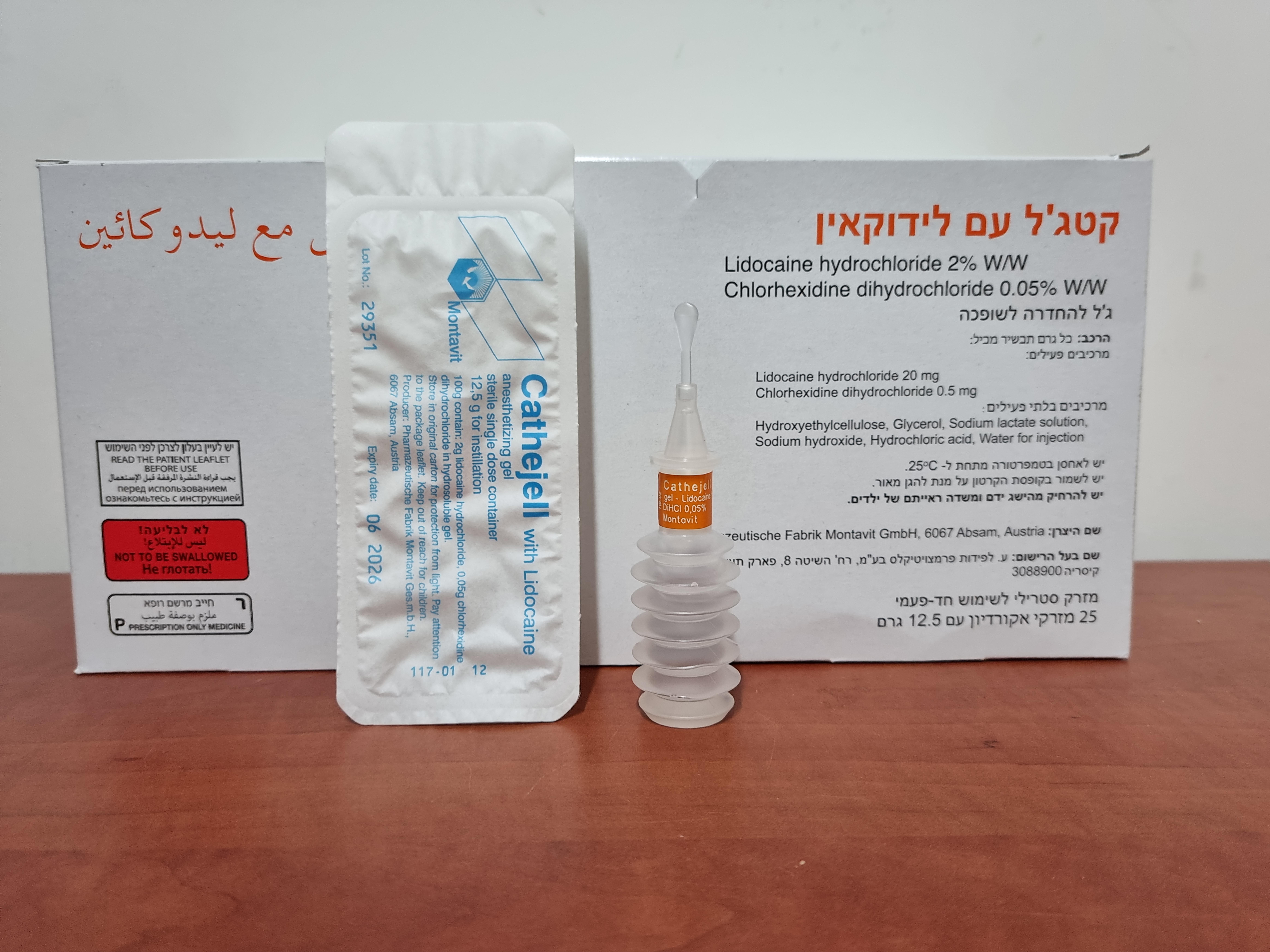Quest for the right Drug

קטג'ל עם לידוקאין CATHEJELL WITH LIDOCAINE (CHLORHEXIDINE DIHYDROCHLORIDE, LIDOCAINE HYDROCHLORIDE)
תרופה במרשם
תרופה בסל
נרקוטיקה
ציטוטוקסיקה
צורת מתן:
לצינור השופכה : URETHRAL
צורת מינון:
ג'ל : GEL
עלון לרופא
מינוניםPosology התוויות
Indications תופעות לוואי
Adverse reactions התוויות נגד
Contraindications אינטראקציות
Interactions מינון יתר
Overdose הריון/הנקה
Pregnancy & Lactation אוכלוסיות מיוחדות
Special populations תכונות פרמקולוגיות
Pharmacological properties מידע רוקחי
Pharmaceutical particulars אזהרת שימוש
Special Warning עלון לרופא
Physicians Leaflet
Special Warning : אזהרת שימוש
4.4 Special warnings and precautions for use Under general anesthesia, a lubricant without lidocaine should be preferred. Cathejell with Lidocaine should be used with caution in patients with - Severe impairment of hepatic and renal function (see also section 4.2), - Cardiac or respiratory dysfunction. Special care is advised in the following cases: - high doses or short intervals between doses. These may lead to high plasma levels and severe adverse reactions. The extent of mucosal absorption varies but is particularly high in the bronchial tree. Use in the bronchial tree may therefore lead to rapidly increasing or elevated plasma levels and is associated with an increased risk of toxic symptoms such as convulsions. - in elderly, debilitated and acutely ill patients, as well as patients prone to seizures (see also section 4.2). - patients with wounds, traumatized mucosa, ulcerative tissue or sepsis in the region of the proposed application site. Damaged mucosa leads to increased systemic absorption. - Patients who are treated with class III antiarrhythmic (e.g. amiodarone); they must be carefully monitored and ECG monitoring should be taken into consideration, as the effects on the heart may be additive. Cathejell with Lidocaine is probably porphyrinogenic and should therefore not be administered to patients with acute porphyria unless strictly indicated. In patients with porphyria, appropriate precautions must be taken. If more than the recommended amount is instilled, a large amount of gel infiltrates the urinary bladder or if the urethra is inflamed and ulcerous, the absorption of lidocaine through the mucous membranes is generally increased - particularly in children and elderly patients - resulting in possible overdoses with central nervous and cardiovascular adverse reactions (see also section 4.9). Patients suffering from myasthenia gravis are particularly sensitive to local anaesthetics. Cathejell with Lidocaine must not come into contact with the eyes.
Effects on Driving
4.7 Effects on ability to drive and use machines Cathejell with Lidocaine has no or negligible influence on the ability to drive or use machines. However, in case of increased individual sensitivity, such effects cannot be ruled out entirely.

שימוש לפי פנקס קופ''ח כללית 1994
לא צוין
תאריך הכללה מקורי בסל
לא צוין
הגבלות
לא צוין
מידע נוסף
